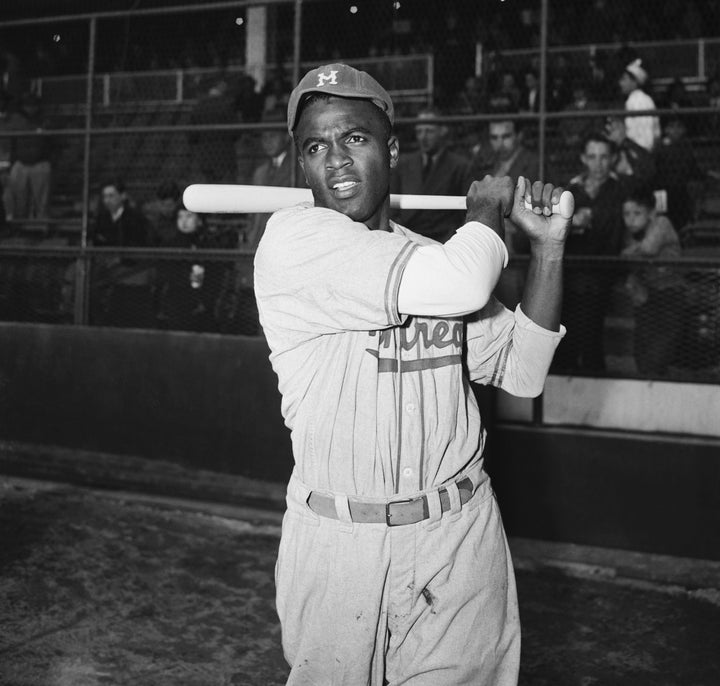
In late January 1938, the Rev. Karl Downs, the new minister of Scott Methodist Church in Pasadena, California, went looking for Jackie Robinson, who had had recently spent a night in jail after a verbal confrontation with a white police officer.
Jackie’s mother Mallie had contacted the young minister and asked if he would speak to her 19-year-old her son in hopes of avoiding additional trouble.
Downs stopped his car next to a number of young men, including Robinson, standing on a popular street corner in the city’s downtown.
“Is Jack Robinson here?” he asked.
No one answered.
“Tell him I want to see him at church,” Downs said sharply and drove off.
An intrigued Robinson went to see Downs.
If Robinson had not met Downs, perhaps history would have turned out different. Robinson perhaps would not have broken Major League Baseball’s color line and become the most important athlete in American history.
On April 15, 1947, Robinson took the field for the first time for the Brooklyn Dodgers, forever changing sport and society. Seventy years later, Major League Baseball recognizes Jackie Robinson Day on April 15. All ballplayers, managers, coaches, and umpires wear the number 42 in Robinson’s honor.
Much has been written about the relationship between Robinson and Branch Rickey, the president of the Dodgers who signed Robinson to a contract. But far less has been said about Downs, who rescued Robinson from the streets of Pasadena, California, and instilled in him the Christian faith that the ballplayer relied on so heavily during his life.
Robinson said he could not have achieved what he did if it had not been for Downs and his guidance, Michael Long and I write in our new book, Jackie Robinson: A Spiritual Biography.
In 1920, when Jackie was a year old, Mallie Robinson moved her five children from Cairo, Georgia, to Pasadena to escape the brutality of the Jim Crow South. She tried to instill in her family that God would take care of them. But Jackie, her youngest child, did not come naturally to his mother’s strong sense of faith and quit attending church.
Robinson excelled in sports at John Muir Technical High School and then at Pasadena Junior College. But away from athletics, he was less disciplined. He increasingly found himself in trouble. He had an explosive temper that was particularly susceptible to racial prejudice. This led to conflicts with police.
Downs was a progressive Christian who used his faith to confront bigotry. In 1937, the Methodist Church asked him to represent the denomination’s youth at a conference in Chicago. They asked him to give a speech to a crowd of several thousand.
Downs, as we recount in our book, was prohibited from staying the conference’s hotel, which was restricted to whites. Methodist officials refused to intervene on his behalf.
Stung by the racism, Downs considered leaving the conference without giving the speech or using the speech to criticize the racism he experienced at the hotel. Instead, he followed his script, speaking as a young Methodist and not as a young black Methodist. He earned a standing ovation.
Downs shared his experience with his congregation, emphasizing that it is sometimes necessary to bear one’s cross in the short term to achieve nobler objectives in the long term. It was a lesson that would not be lost on Robinson, who would find in Downs, his elder of just seven years, a friend, mentor, and a father figure. Robinson’s own father had abandoned his wife and children in Georgia.
In his biography of Robinson, Arnold Rampersad describes how Downs became the channel through which the ballplayer found his faith. “Faith in God,” Rampersad said, “then began to register in him as both a mysterious force, behind his comprehension, and a pragmatic way to negotiate the world.”
Downs taught Robinson that faith was not only about praying; it was also about bettering himself, advancing justice, and improving society. Downs also taught Robinson to be proud of his skin color.
But, perhaps most importantly, Downs taught Robinson how to deal with his own anger and with other issues. “Often, when I was deeply concerned about personal crisis, I went to him,” Robinson said.
Downs asked Robinson to teach Sunday school at Scott Methodist. Robinson agreed, often fulfilling his commitment the morning after playing in a football game for Pasadena Junior College and then at UCLA.
After leaving UCLA, Robinson enlisted in the U.S. Army. When he was discharged in November 1944, Robinson lacked a sense of purpose. Downs was then president of Samuel Huston College, a black school affiliated with the Methodist Church, in Austin, Texas. Downs hired Robinson to teach physical education and to coach basketball.
Robinson left to play for the Kansas City Monarchs in the Negro leagues during the summer of 1945. On October 23, 1945, the Brooklyn Dodgers announced it had signed Robinson for the Montreal Royals, the organization’s top minor league team.
Downs presided at the wedding of Jackie and Rachel Robinson in February 1946.
Several months later, Downs spoke at the annual meeting of the NAACP, where the influential black newspaper, the Baltimore Afro-American, praised him as “the most promising and potent minister today.”
Nobody in sports ever faced the pressure that Robinson did when he played in his first Major League game. Nobody in sports ever faced the verbal and physical abuse that followed Robinson from ballpark to ballpark. Robinson persisted in part because of the determined faith that Downs modeled for him.
Downs visited Robinson in Brooklyn during his rookie season. Downs complained of stomach pains and the Robinsons took him to a hospital and encouraged him to stay for further tests. Downs, however, had responsibilities waiting for him.
He returned to Austin, where he underwent an emergency operation by a white doctor in a segregated hospital. Downs was sent to a segregated ward to recover, complications developed, and he died. He was 35.